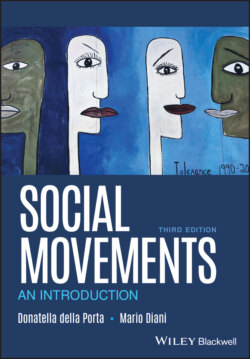Читать книгу Social Movements - Donatella della Porta - Страница 15
1.2.2 Conflictual and Consensual Collective Action
ОглавлениеIt is not rare to witness broad coalitions of charities and other voluntary associations mobilizing on solidarity issues, such as on social exclusion in domestic politics, or on development or human rights issues in an international perspective, and to refer to them as social movements. In many cases, however, they might be best characterized as consensus movements. In both social movement and consensus movement dynamics, actors share solidarity and an interpretation of the world, enabling them to link specific acts and events in a longer time perspective. However, in the latter sustained collective action does not take a conflictual element. Collective goods are often produced through cooperative efforts that neither imply nor require the identification of specific adversaries, trying to reduce the assets and opportunities of one’s group or preventing chances to expand them. Prospected solutions do not imply redistribution of power nor alterations in social structure but focus instead on service delivery, self‐help, and personal and community empowerment. Likewise, the practice and promotion of alternative lifestyles need not the presence of opponents defined in social and political terms. Collective actors may fight ethereal adversaries, ranging from bad or conventional taste, in the case of artistic and style‐oriented movements, to “the inner enemy,” in the case of some religious movements, without necessarily blaming any social actors for the state of things they intend to modify.
However, insisting on the presence of conflict as a distinctive trait of movements need not force social movement analysts away from the investigation of those instances of collective action where a conflict is difficult to identify, such as those oriented to personal change (e.g. the human potential movement, or many countercultural, alternative lifestyle networks) and those focusing on the delivery of some kind of help or assistance to an aggrieved collectivity (e.g., solidarity movements: Giugni and Passy 2001; Brown and Yaffe 2013). This perspective implies, instead, that analysts recognize the presence of several social mechanisms or dynamics within each instance of collective action, and focus their efforts on exploring how such mechanisms operate and interact with each other.
